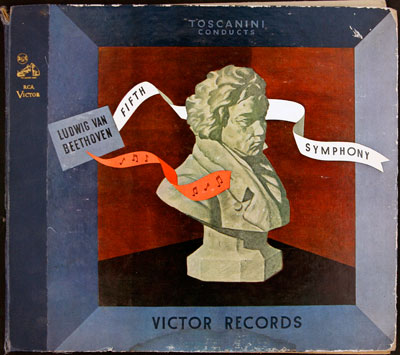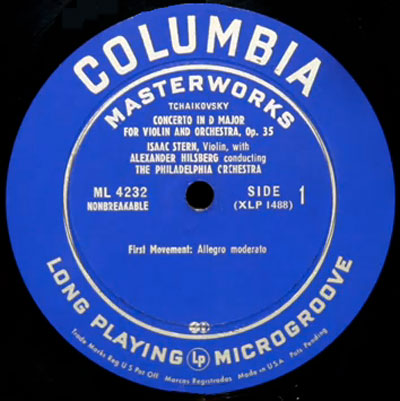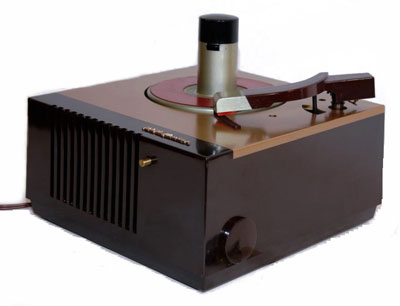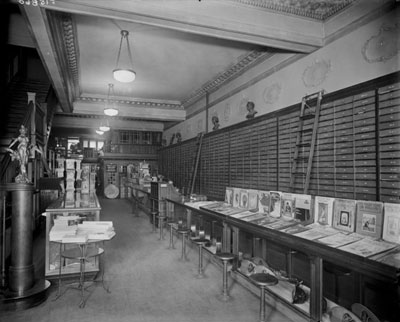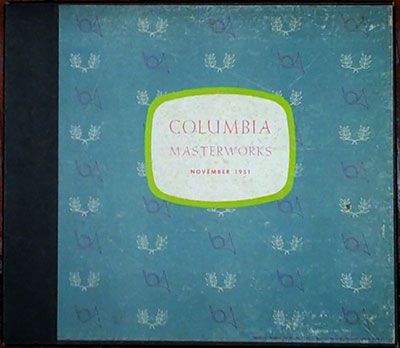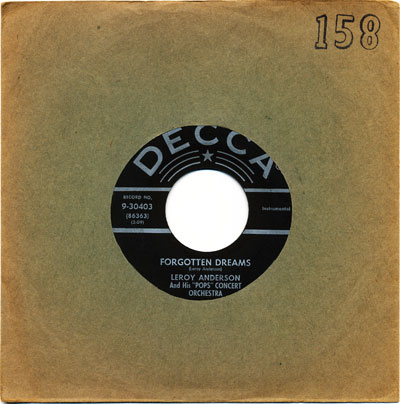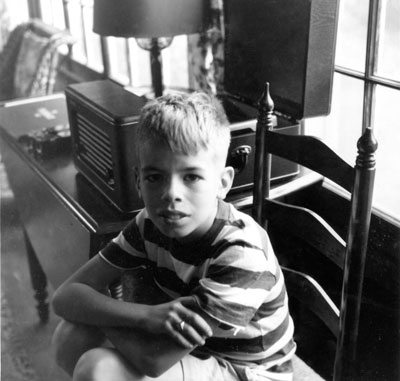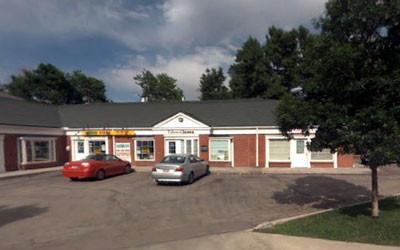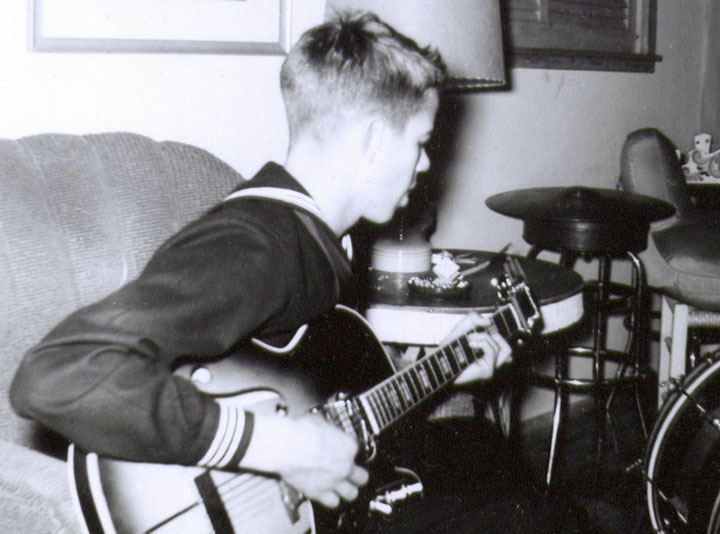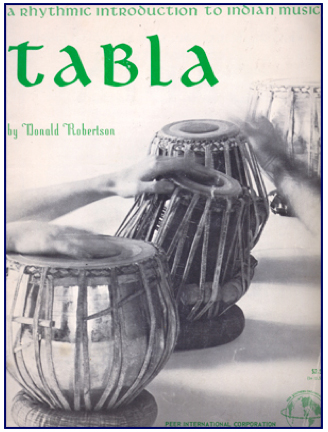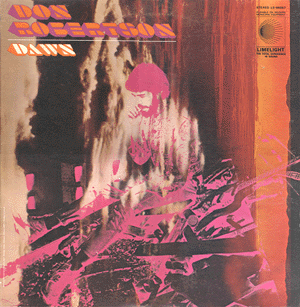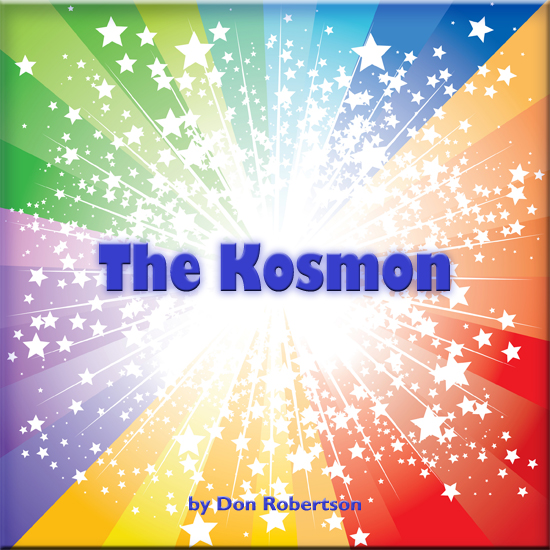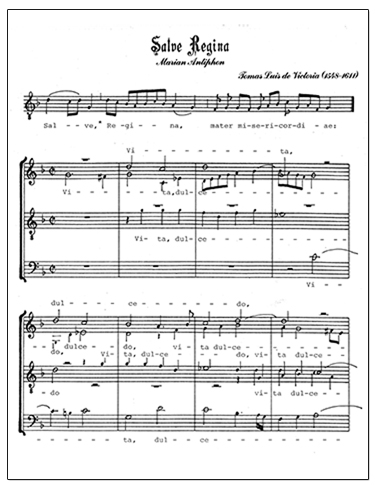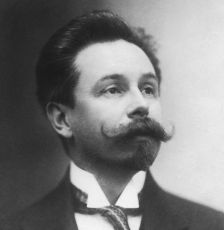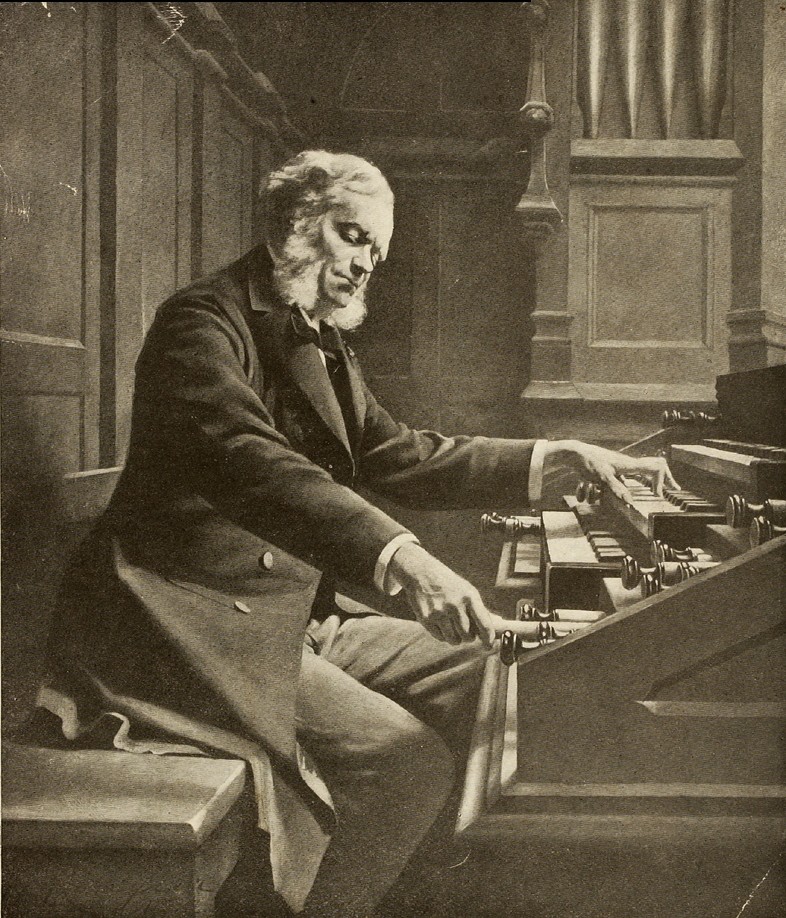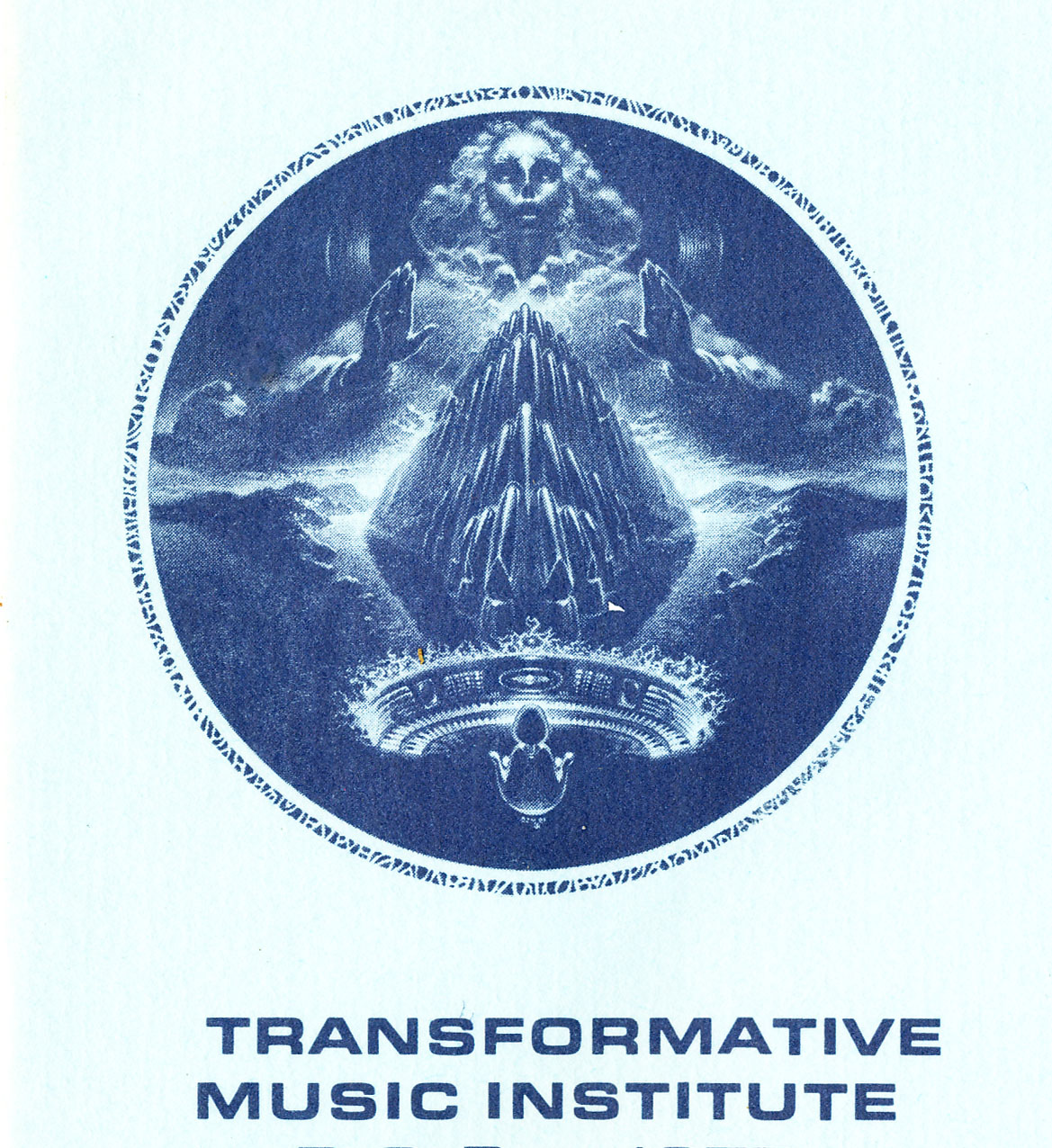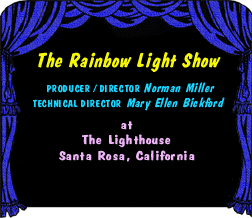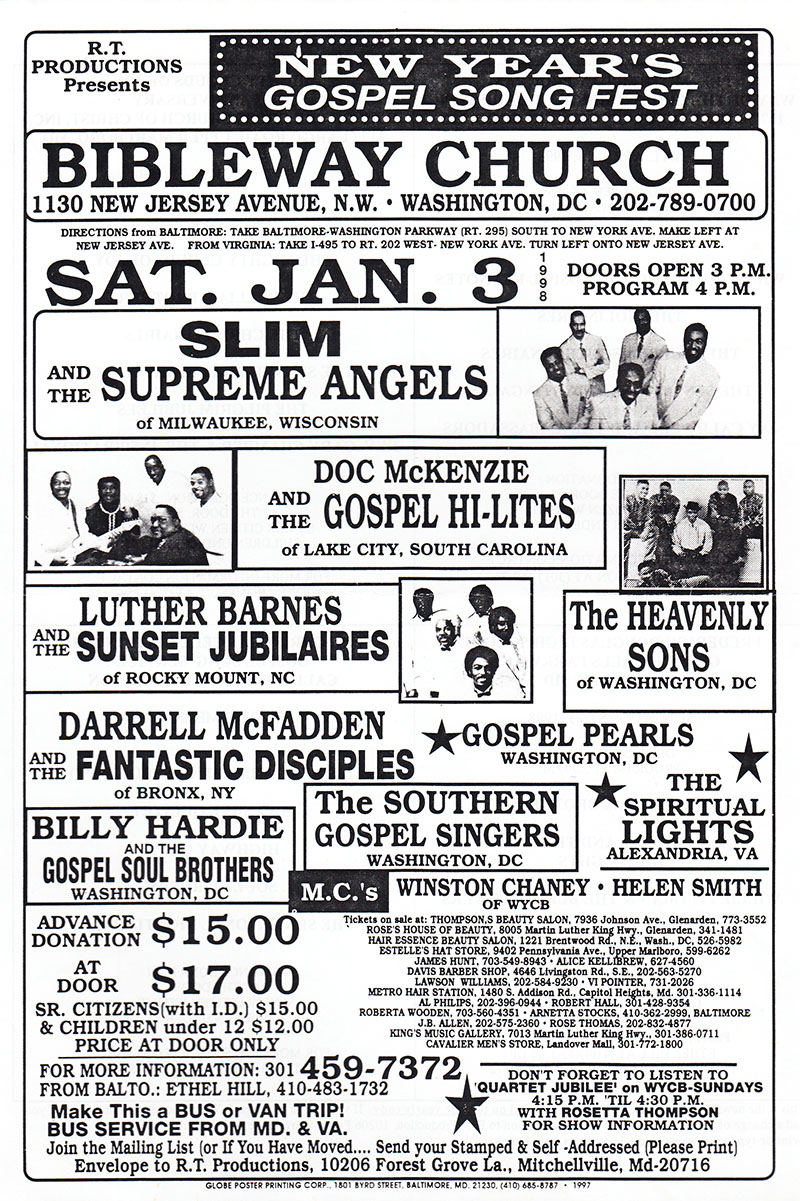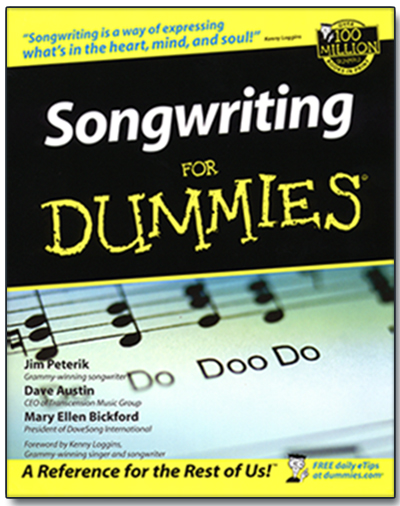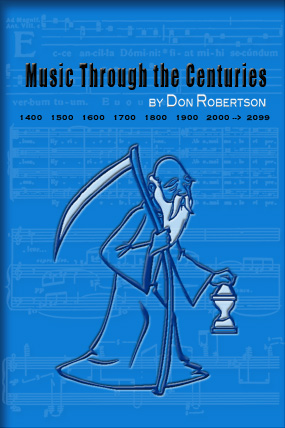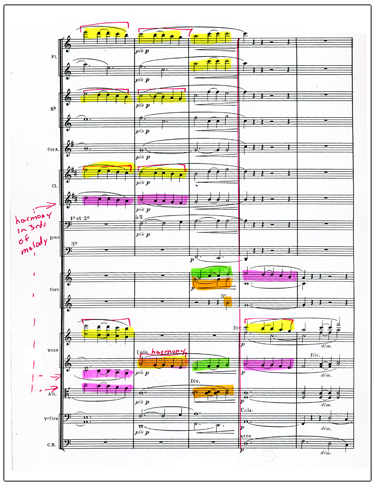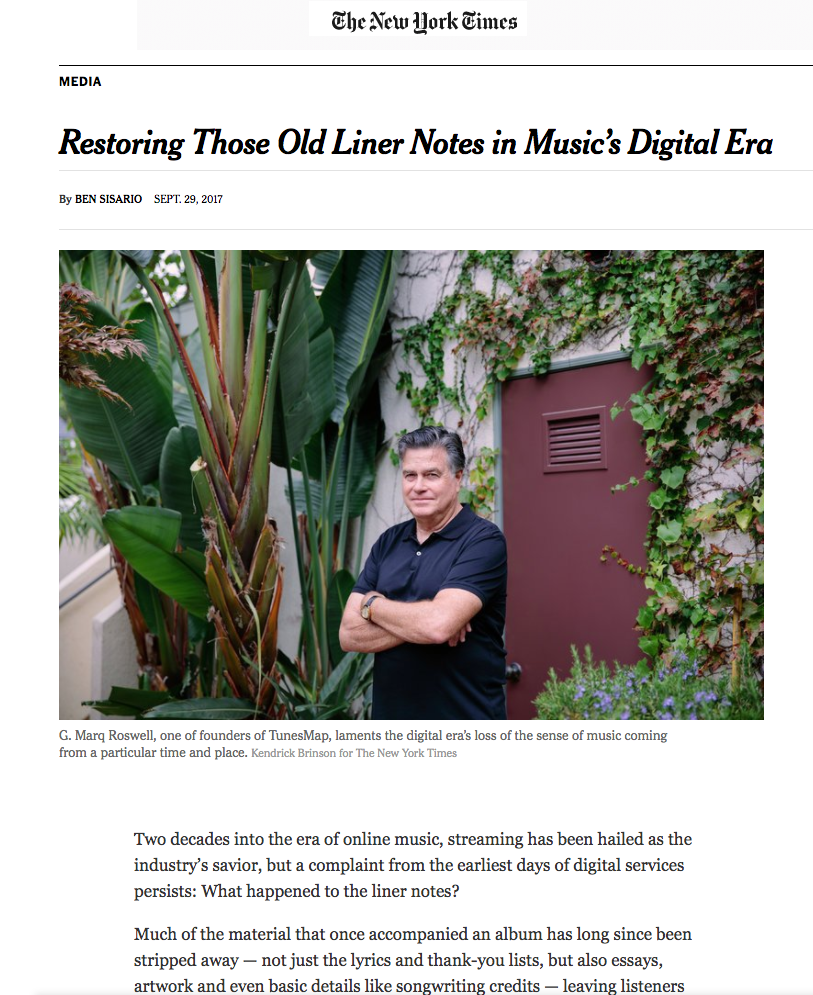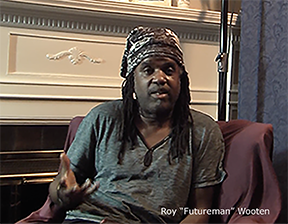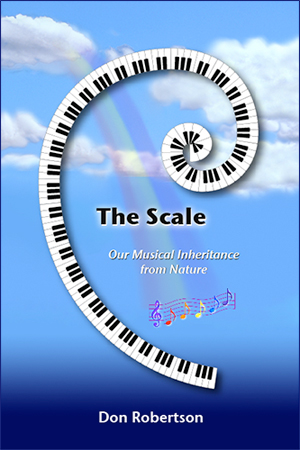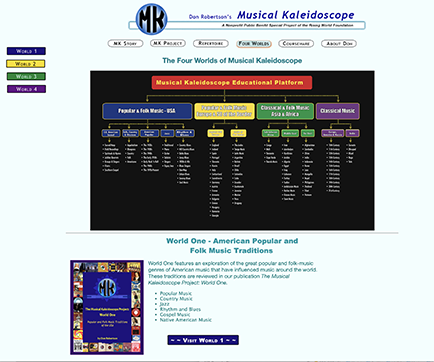


|

|

|

|
The JourneyI began collecting records when I was 3 years old. My first were 78rpm 10- and 12-inch singles, along with a few 78rpm albums. Uncle Ernie had a jukebox business, and he would bring me boxes of records from his jukeboxes. Classical music records were provided by Grandma Robertson, who supported my love of music by taking me on what she called "bats," our special record-buying shopping expeditions. Don Robertson |
My favorite records were the four 78rpm 12-inch records in the Beethoven Fifth Symphony album. Mom told me years later that everyone puzzled at how I always knew the order that the records were to be played in, as I was too young to understand numbers. Each record had a different amount of groves, leaving the areas between where the groves ended and the the label began different for each side. I memorized the proper order of the sides by looking at the lengths of this area, equating the size of these with the days of the week, the order of which I had already learned. Toscanni conducts Beethoven's 5th Symphony |
Walter Schlegel and his family lived directly behind our home. He owned the Denver dealership for Philco, the company that produced the first LP record players. One day in 1948, Mrs. Schlegel summoned me to her home and introduced me to Denver's first LP record player, with records that had been produced by Columbia, the inventor of the LP record format. I spent many hours every day in her home listening to music. I marveled at how slowly the records turned, compared to the 78s, and how much music was on each one. Tchaikovsky Concerto with Isaac Stern |
In February, 1949, RCA Victor announced the introduction of the 45rpm record player, and two months later, for my birthday, Grandma Robertson bought me one of these early players, along with a stack of RCA Victor classical record albums: box sets of 45rpm red-vinyl records. Over the next six years, my collection of 45rpm records continued to grew. In 1950, my father gave me an Eicor tape recorder, one of the earliest commercial tape recording machines, and the following year, I was given a 3-speed "record changer" that played 45s, LPs, and 78s. Video demonstrating RCA 45rpm Player |
When Grandma Robertson took me on one of our "bats," we rode in her big Cadillac downtown to the Charles E. Wells Music Company and to Knight-Campbell Music, Denver's two premiere music stores, and then, following this, we always had a fantastic lunch at the Denver Athletic Club, where Grandpa was one of the directors. I loved going to the "D.A.C." because of the piped-in music provided by Muzak. Music from Muzak in those days had not yet become the "elevator music" that later Muzak would especially create for dining and shopping ambiance. Instead, classical and semi-classical records from the RCA and Columbia were featured. |
About 1950, Denver band leader Milton Shrednick opened a record shop on East 8th Avenue, about a mile from my home. I went there any time that I was able, and I probably drove poor Mr. Shrednick crazy. In those days you could listen to records in listening booths that every record store provided, and I did just that. I was intent on hearing every record in the store, if possible. The photo above shows one of the classical music promotional records from Columbia that Mr. Shrednick used to give me each month after he was finished with them. Every penny of my allowance went toward buying 45rpm records from Milton Shrednick; LP records were beyond the means of my youthful budget. |
I catalogued and assigned a number to every record in my collection. I purchased the same green sleeves that "real" radio stations used, and stored all of my records on a shelf in my bedroom radio station. Meanwhile, my childhood friend and home radio-station coconspirator, Rob Wilfley, typed letters to every record label in the USA requesting free demonstration record service, as was the practice in "real" radio stations. For about a year, I received every popular record issued by the record companies Dot and Coral.
|
As LP records were beyond my childhood budget, I listened to classical music and semi-classical musicals that I found in the houses of relatives and my parents' friends. For this photo, I had asked my sister Leslie to hold up an LP record that I had found among the records belonging to my Aunt Dorothy, when we visited her on Cape Cod about 1952. I wanted a photo of this album because it had a green label that I hadn't seen before. But alas, the label's color could not be viewed in a black and white photograph! |
My mind was always filled with music. I composed new music in my head, humming it, trying to mimic the sounds of various instruments of the orchestra. I could replay complete records in my mind also, exactly as they sounded when I played them. All of this constituted my inner world. On the family trip to visit Aunt Dorothy in Cape Cod, my aunt asked me to pose for a photograph. Being a painter, she wanted to do a charcoal portrait of me based on this photo. I told her I would not sit for a photo unless it included her record player. Here is the result. |
About 1955, a new music store appeared near my home in Denver. Located in the 300 block on Holly Street, it was operated by the wife of another Denver bandleader, Lou Morgan, and she was just my kind of lady. Fascinated with me, my radio station, and my love for both classical and popular music, she would go to any length to find records for me. She was my source for records that nobody else in Denver sold. She would call executives at record labels to find a rare pop 45 or 78 RPM record that I had heard only one time on the radio. My 45 and 78 RPM record collection continued to grow. It took months for her to locate the original German 78-rpm records by piano player known as Crazy Otto. The distributor for Mercury records did not have copies of a record that I liked by A&R director David Carroll, and so she got the record label to send me a free copy of the 45-rpm record. |
With the arrival of Elvis Presley in 1956, I abandoned all other forms of music except for rock and roll. However, I discovered the guitarist Django Reinhardt in 1960 and that year I turned from rock to jazz. In September, I joined the US Navy. I continued to collect records, but now it would be Jazz that I was interested in until late 1961, when I rediscovered classical music. After I was discharged from the Navy, I started using money that I made playing guitar in bands and combos to augment my growing classical record collection. After my nearly four-year Navy hitch, I enrolled in the music school in Boulder, Colorado and formed a jazz/blue trio called the Contrasts. |
In early 1966, I was attending the music school of Colorado University in Boulder. When a man who worked in a Boulder record store introduced me to North Indian classical music and the great Indian musician Ustad Ali Akbar Khan, my musical life changed forever. This music had such a profound effect on me that I decided to study it seriously. That summer I enrolled in the School of Ethnomusicology at the University of California Los Angeles (now the Herb Alpert School of Music), and there I was introduced to the music of the great classical music traditions from around the world: India, Japan, Greece, Persia, China, Africa, Java, Bali. Only a few records of world music were available in the US at that time, and I searched for them diligently. I also began studying the Indian instrument, the sitar, becoming a private student of Harihar Rao, and also a private student of Leonard Stein, who had been the student and longtime assistant of composer Arnold Schönberg, whom I call the Father of Negative Music."
|
In the fall of 1966, I moved to New York City to attend the Juilliard School of Music. I played guitar, tamboura, tabla and sitar on recording sessions for national TV commercials and the Lotus Palace album, and albums by Harumi, Bobby Calendar, and the bands Chamaeleon Church (Chevy Chase on drums) and Ultimate Spinach. I studied privately for two years with composer Morton Feldman and was among Ustad Ali Akbar Khan's first American students. There was a store located in downtown Manhattan called Sam Goodies that imported record albums from all over the world. It was in this store that I began to find the great recordings of the master vocalists of North Indian classical music. The records that I purchased from this store form the heart of my Indian music collection of recordings. I continued to collect North Indian classical music in the form of LPs, CDs and cassettes for many years to come. In 1968 I wrote the first instruction manual in the Western World on Indian drumming (the Tabla). It was published by the Peer-Southern Music Corporation in New York City.
|
In 1968 I moved to San Francisco to study tabla with Pandit Shankar Ghosh, and to prepare for my first album. I had been signed to Mercury Records' subsidiary Limelight label and would be working with the producer of the original heavy-metal band Blue Cheer and guitarist Harvey Mandel, Abe "Voco" Kesh. The Dawn album was where I introduced for the first time, music that I was calling New Age Music. This album, now considered to be a classic, was re-released on vinyl and CD in Italy in 2001. In this album, I unveiled my discovery of "positive and negative music." Side One explores the positive side of music, opening with a long improvisation on zither in the pure pentatonic scale - the most harmonious scale that exists - and Side Two features the duochord - a term that I had coined to represent the root discord of creation - and my ultimate heavy-metal "bomb" that anticipated negative music that would arise from negative rock artists later in the 1980s.
|
I moved back to my home state of Colorado in 1970, where I teamed up with childhood friend and graphic artist John Fresquez to create our self-published book called Kosmon. In this book I detailed the reality of positive and negative music and warned of a coming onslaught of heavy-metal music, a negative form of music that uses distorted electronics to created discordant overtones. I presented in this book for the first time the theories that I had been evolving, since 1962, concerning historic cycles in music and art, a theme that I will further expand in 2005 with Music Through the Centuries, and that I will complete with my forthcoming book Song, Story and Art for the Next 100 Years - Toward a New Cultural Narrative. In the Kosmon article Musical Numerology, I revealed the periodocy of the enneagram, later to be called vector math (the foundation of the universe), as well as the reality of the numbers 3,6, and 9 that I would later discover to be the favorite numbers of Nicola Tesla. In the Kosmon, I also presented ideas about climate change, organic food and ancient civilizations. |
In 1968, during my final months of living in New York City, I had begun listening to the music of J.S. Bach, finding great recordings imported from Germany and Holland. One night in San Francisco during 1971, I had a dream. In this dream I heard a voice saying that Bach was a very great composer, but other great composers had lived before his time. I was then shown an album cover with the name Palestrina written on it. I knew about the music of the 16th century Italian composer from my studies at Colorado University, but I had never considered his music interesting. I took my dream seriously, however, and at this point I began daily listening sessions, finally grasping what Palestrina's amazing music was all about. I was astounded by the beauty of the great music from the 16th century, and I embarked upon a three-decades-long research of Renaissance sacred music and Gregorian chant, acquiring every available recording, and searching for scores, which, unfortunately, were not available commercially. My search for original manuscripts of this music led me to some of our great university libraries, where I spent hours in front of copy machines, making copies of important musical scores, then using a drafting table, I recopied these scores into modern notation to be used in publications that will be forthcoming from Musical Kaleidoscope's DoveSong iUniversity.
|
In 1974, I discovered the music of the 19th-century German composer Richard Wagner. Despite all my university and Juilliard music training, I had fallen victim to the false ideas about this composer that have flooded mass thinking since he was alive - that he was a terrible person who hated Jews. I discovered the music, beginning with the Prelude to the opera Lohengrin that describes the angelic descent of the holy grail. I undertook a two year research project, reading and collecting a cabinet of books, studying the German Language. Richard Wagner is not only one of the greatest composers who ever lived, but the first great music dramatist. His works penetrated powerful emotional and spiritual barriers and his incisive rhetoric infururated many who were intrenched in many of the stilted ideas about art and man, and thus he became the enemy that many describe him as today. However, he was a big influence on the artistic movement in France known as impressionism, and the new music of the composer Alexander Scriabin, both of which I will describe next.
|
I discovered the music of the Russian composer Alexander Scriabin in 1974. Recordings of his music, with only a few exceptions, were very difficult for me to find, and scores were nowhere to be seen. For the next few years, I searched for music and scores, as what I had heard, I felt was very special. Reading the excellent biography by Fabian Bowers, I understood that this composer's interest in the connection of music with higher conscioiusness, consumed him, and certain of his compositions, which are mostly for the piano, touched very special interior realms. However, in some of his compositions, he ventured into dark places, and so I sorted out the compositions that I accepted from those that I would never. To this day, it is mostly the piano music of Alexander Scriabin that I like to perform when I am enjoying playing music of other composers. I will a book about Scriabin in 1979, almost finishing it, and never have, and perhaps will.
|
In About 1976, I began collecting the music of the impressionist French composers, Cesar Franck along with students of Cesar Franck: Debussy, Chausson, Duparc, Lekeu, Ropartz, d'Indy, as well as other very important postive-music composers of the period such as Magnard and Faure. Discovering this world of French classical music was a revelation for me, and my collecting and study continues to this day. So much of this music was, and still is, completely unavailable. I went to great extremes in order to find it. For example, when I heard that a newly released and nearly impossible to find recording of Franck's Beatitudes was to be broadcast on a local FM station, I paid a professional to record it from the radio for me. The French composer Guy Ropartz, who has been almost completely forgotten, I consider to be one of the great composers of the 20th Century.
|
In 1980, after a decade of studing Renaissance sacred music, Gregorian chant, Wagner, Scriabin and the French impressionist composesr, I embarked upon a mission to continue to discover, research and now to reach out and teach about music and the conection with higher consiousness. I met my future wife, Mary Ellen Bickford who was working with Norman Miller on their Rainbow Research Project, and my wife and Norman and Mary Ellen began a three-year stint working together. We held three seminars in the San Francisco Bay Area on music and visual healing and upliftment, and I began giving lecture-demonstrations about positive and negative music, a performing concerts of healing and uplifting music with my 80-string zyther tuned to the pentatonic music scale (the notes C,D,E,G,A). All this activity was a part of what I called at that time, the Transformative Music Institute. Our logo (above) was created for us by the late visionary artist Brian McGovern.
|
Mary Ellen Bickford, Norman Miller and I all met in Sonoma County, near Santa Rosa - where I lived - during the same week in April, 1980. I had contacted Norman because I wanted to produce a slide show performance to accompany music, and that was what he was doing. He had just met Mary Ellen, and we began working together. Norman was a master at creating uplifting and healing color-slide performances accompanying music. In 1981, they established Rainbow Research and were giving presentations with hundreds of people attending. Mary Ellen: "Norman Miller and I had rented a beautiful home in Santa Rosa, California where we would carry out the work of Rainbow Research, Inc. and present our increasingly popular multi-image shows. We called our new home the Lighthouse. For the shows, we hung a 9' x 9' rear projection screen in the archway between the living room and dinning room and created a theater environment with lots of chairs, pillows, and walls that were covered with original paintings and prints by the artists whose work we used in the shows."
|
My 1990s were about gospel music. From 1990 to 1994, I concentrated on composing my ballet Kopavi, the first year in study of orchestral scores, the last in preparing the score and parts for the performance that never happened. It was during 1994 that I decided to end composing new age music, the genre having changed directions, becoming something opposite to what we, who invented it, had decided what it was, and I decided to explore gospel music instead. I knew it must be an important genre, and I knew nothing about it. I discovered the genre of Southern Gospel Music, a genre that many people who did not grow up in the South do not know exists, on the car radio while driving through Eastern Tennessee on an exploritory mission. I moved to Richmond, Virginia in Novemember, 1995, and Mary Ellen joined me two years later. I traveled across the South attending numerous concerts and visiting collectors, record shows, and flea markets and accumulated a fantastic collection of recordings. When Mary Ellen and I were married in 1999, the family bluegrass gospel group called "The Isaacs," who had become our friends, sang at our wedding. I was very fortunate to have found very rare recordings of both Southern and African American gospel music and I continued collecting until 2002, when I was satisfied that I had found everything that I was looking for.
|
I also discovered African-American, also known as "black," gospel music. My mentor was my good friend Barky, of Barky's Spirituals in downtown Richmond Virginia,where I lived from 1995 to 2000. His store is still the best, and perhaps the only, traditional gospel music store in the USA. The East Coast from Washington, DC, down to Raleigh, North Carolina was a stong area for traditional African-American gospel music, and Mary Ellen and I attended concerts on a regual schedule, feeling very priveleged to be a part of a genre of music that few people of caucasion decent appeared to know about. As with the music of the Southern Gospel tradition, we accumulated a large collection of recordings, and accumulated memories we will never forget. Traditional black gospel music is something quite apart from the the contempory types of gospel music that have been overtaken by commercial interests and have mostly left behind what to us really mattered in an important American music tradition.
|
During our gospel-music period, I had signed a contract with the Commonwealth of Virginia, and for four years, wrote software for the Virginia Department of Motor Vehicles. Part of my work was implementing the department's first website. In March, 1997, Mary Ellen and I hired the young man who was programming the DMV website to create a website for us during his off-hours. Mike Martin unveiled the new site for us (shown in the video above), and DoveSong.com was born. One of the very first websites dedicated to music education, if not the first, DoveSong became our platform for turning the world onto positive music. The site became a hit pretty much right away, and became more and more popular as we added more content during the following five years. When we added our MP3, Score and Text libraries in 2000, the site was already high in search-engine rankings. Our mp3 recordings of gospel and North-Indian classical music recordings that we made available for downloading were in constant demand for several years until we could no longer afford hosting costs, and we spread the word about positive music, and especially the effects of music on plants, far and wide. The site continues to receive over a million hits each year. |
In 2002, Jim Peterik, me, and Mary Ellen, wrote the best-selling book Songwriting for Dummies. This coencided with three-year period where I concentrated on collecting and studying the song traditions of popular, country, Southern gospel music and art song. The research that I had already begun when the book contract was offered to us continued, and, with exception to some of the more advanced studeies became sections of the book. Although I wrote a third of the book, we left my name off as an author because the publishers allowed only three names, and Davie Austin was the point man. Mary Ellen and I, then living in Georgia, moved to Nashville in 2003 when I retired from the computer industry. We loved Nashville and moved right into the heart of the music world, meeting many of the great songwriters, composers and musicians who lived and worked there. Songwriting for Dummies was re-written in 2010 by Dave Austin and his wife, and most of the information that I had provided was removed, bringing an intermediate-level book down to dummy status, true to its namesake c'est la vie. |
I called my 2005 publication Music Through the Centuries an on-line book because, rather than publishing it, I simply added it to the DoveSong website, where I could provide links to material that was available on the internet. The subject of the book is my discovery that each of the six centuries of classical music that I had been researching since the 1960s had its own particular and specific musical style that began in the beginning of the century and ended at the end of the century, when that style of music either transitioned into the next century's style, or was replaced by it. This was an amazing understand that I had gained, and lent further credance to my reseach into historical cycles as they relate to music and art that I had been researching since 1962, although I did not fully understand how this realization of the specific styles for each century fit into a large cyclic picture until 2016, when I began work on my next, still not completed, book Song, Story and Art for the Next 100 Years: Towards a New Cultural Narrative.
|
As I had stated previously, I began researching, studying and transcribing Renaissance sacred music and Gregorian chant, preparing volumes that I planned someday to be published for almost thirty years. Beginning in about 1978, I had also began studying and analyzing scores of the music of Alexander Scriabin, Richard Wagner, César Franck, and other composers, most of these scores only available after considerable searching, mainly in university libraries. I began work again on what was now my publications library in 2005, and this work continued until 2019. As a preparation for the eventual publication of the library (when costs would be less prohibative, and availability via the internet more practical), I created a section on DoveSong.com describing the publication library, giving it a name suggested by Mary Ellen: The DoveSong iUniversity, as at that time, "everything internet" seemed to begin with a lowercase "i" (iPhone,iMusic,iBooks,iPad, etc.). By 2006, our conception of Musical Kaleidoscope that we had coined in 1997, had transformed from the radio show that I had first produced when I was only 12, was later re-created with the 1980 Sonoma State University radio program,into a more encompassing format that included videos... including "follow-along" scores in video format.
|
While our year-old digitizing project that I cover in the next part of the Musical Kaleidoscope Story was underway, I undertook an almost two-month journey to Europe. My life had been so imbued with European culture that it was almost always a part of my everyday life in one way or another, since my first lessons in the home home my childhood teacher, Antonia Brico, whose home was filled with photos, letters, books, and so much great European Culture. I had first visited Europe as a part of a school group in 1958, and Mary Ellen and I had an amazing European trip in 1999. The 2007 trip was an exploritory trip to discover the music and language culture. There was a two-week intensive course in French at Alliance Francais in Paris, and a two-week intensive course in German at the Goethe Institute in Berlin. It was on this trip that I discovered my favorite place for listening to music: The Concertgebouw in Amsterdam, and the Thomaskirke where Bach was the kantor for the last 27 years of his life in Leipzig, where Wagner and my own Great-grandfather were both born. I shipped back to my home in Nashvile 6 or 7 boxes of scores, books and CDs.
|
2008 was the year that G. Marq "Gilly" Roswell came to visit us, to find out about DoveSong.com and the music digitizing project that we had just completed. Gilly is a music supervisor (music for films) in Los Angeles, who has since 2007 been developing an application called TunesMap. Tunesmap provides an environment where the culture surrounding a particular song, symphony or show can be presented instantly with a click of a button. A "tunesmural" appears, from which one can begin an investigation of books, videos, films and much more information relating to the song in question, its genre, its time and place. The Tunesmap app became available in 2017. It works with Sonos and Spotify. Gilly has founded the TunesMap Educational Foundation that brings this technology into the educational sphere, and Rising World Foundation will be partnering with TEF to add cultural context to our Musical Kaleidoscope content.
|
I made another two-month exploritory trip to Europe in 2009. I mapped out the entire trip, setting up meetings and gathering information, before I left. Now that I was past the langauge barrier, I visited cathedrals in Paris, the Royal Concertgebouw in Amsterdam, and concerts in Berlin. I met with two of the top organists in France (Thierry Escaich, Vincent Warnier), was invited to a radio interview ("Mark from Holland"), and hung out with Manuel Gottsching and Gert Wegner in Berlin. Another six or seven boxes of scores, books and CD returned via post (OK, one was lost by the US post office).
|
Throughout most of the year 2013, Mary Ellen and I hosted "Musical Kaleidoscope Presents" in our Nashville home on Thursday nights. These events were attended by up to six people, and each event had a different theme. They were basically preparations for the shows and classes that we would begin producing in video format in April of 2017.
|
In 2014, I published my book "The Scale," which for the first time made my most recent discoveries about the nature of our harmonic scale (the basis of the creation that we live in, and experience as music) and a summing-up of my understanding of positive music that I have been teaching for over fifty years - Don Robertson
|
The year 2021 is devoted to developing MK-TV.org, Musical Kaleidoscope TV: the first phase in the evolution toward the app that we will be builing, along with the Tunesmap Educational Foundation. Since early 2017, we have been devloping and collecting content for MK-TV and the app, including shows, classes, documentaries, films and follow-along scores, with over 600 videos already completed.
|

|
 |

|

|

